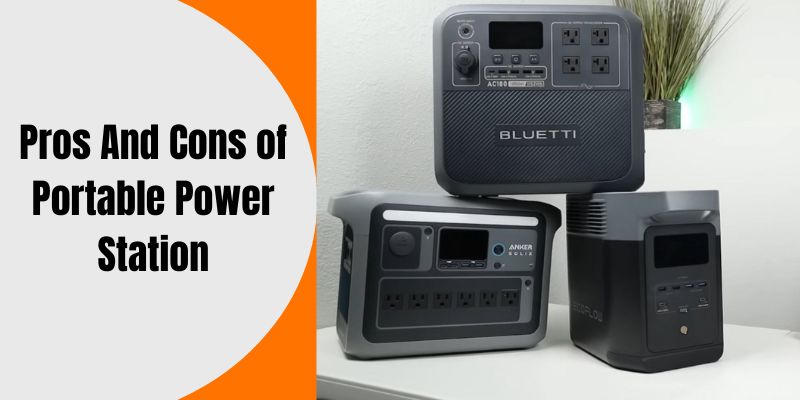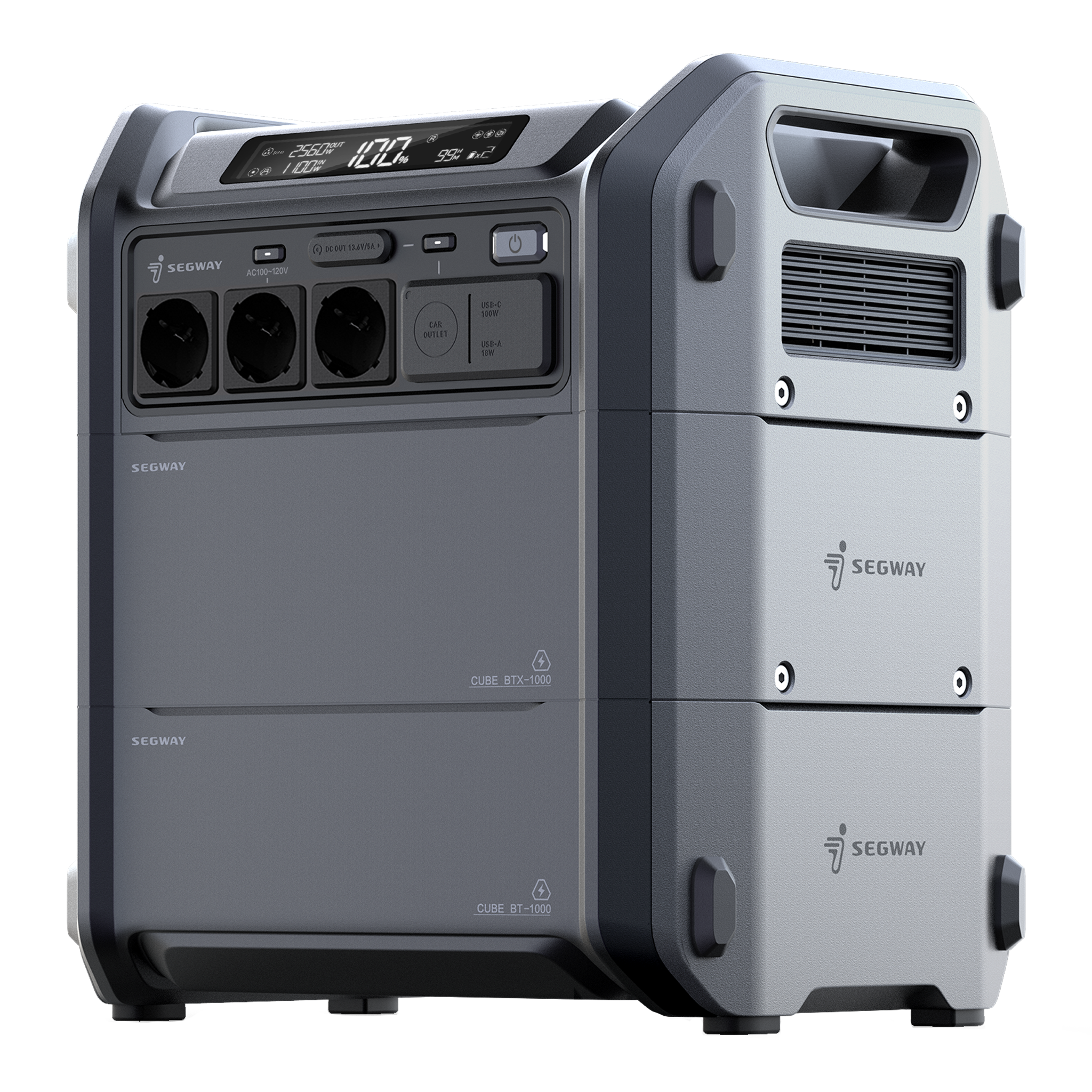Portable power stations are gaining popularity. They offer convenience and versatility.
These devices are great for camping, emergencies, and outdoor events. But are they right for you? Understanding the pros and cons is essential. Portable power stations provide power on the go. They are compact and easy to carry. Many people use them for charging phones, laptops, and small appliances.
They offer a clean energy solution, often with solar charging options. Yet, they have limitations too. Battery capacity and charging speed can vary. Prices can be high for advanced models. Before investing, it’s crucial to weigh these factors. This guide explores the advantages and disadvantages. It helps you decide if a portable power station suits your needs.

Introduction To Portable Power Stations
Portable power stations offer convenient energy on-the-go, ideal for camping and emergencies. They provide clean energy without noise, but limited capacity might not support high-power appliances for long. Lightweight design ensures portability, though frequent recharging can be a downside for some users.
Imagine you’re camping in the woods, miles away from civilization. Your phone battery is dwindling, and the thought of missing out on capturing those breathtaking landscapes is unsettling. This is where portable power stations come into play. These compact devices have become essential for adventurers, remote workers, and anyone seeking reliable power on the go.
What Are Portable Power Stations?
Portable power stations are battery-powered devices designed to provide electricity where traditional power sources aren’t available. They come equipped with multiple outlets and USB ports, allowing you to charge various gadgets simultaneously. Unlike noisy generators, these stations operate quietly, making them suitable for indoor use as well.
Their size and weight vary, but most models are designed for easy transportation. You can stash them in your car or backpack, ready to power your devices whenever needed. Whether you’re hiking, camping, or working remotely, these power stations offer a convenient solution.
Growing Popularity And Uses
The demand for portable power stations is skyrocketing. As more people embrace digital nomad lifestyles, the need for reliable and mobile energy sources increases. These stations cater to diverse needs, from charging smartphones and laptops to powering small appliances.
Consider a scenario where you’re hosting an outdoor event. A portable power station can keep your sound system and lights running, ensuring the party doesn’t stop. Additionally, they’re invaluable during power outages, providing essential backup for your home electronics.
Why not explore the possibilities with a portable power station? With their growing popularity, they might just be the solution you need for uninterrupted power, wherever life takes you.
Advantages Of Portable Power Stations
Portable power stations are increasingly becoming a staple in modern households and outdoor adventures. Their advantages go beyond just providing a backup power source. They offer a blend of convenience, sustainability, and reliability that traditional generators often struggle with. As you consider adding one to your collection of gadgets, it’s worth exploring what makes them such a valuable investment.
Portability And Convenience
Imagine being able to power your devices anywhere without the hassle of finding a power outlet. Portable power stations can easily fit in your car trunk or backpack. They’re designed for mobility, allowing you to take them wherever power is needed—be it a camping trip, a picnic, or even an outdoor wedding.
These devices are user-friendly and require minimal setup. You simply charge them at home, and they’re ready to go whenever you need them. The convenience of having reliable power at your fingertips is unmatched, especially in remote locations where electricity is scarce.
Eco-friendly Energy Solution
Portable power stations often utilize lithium-ion batteries, which are a more environmentally friendly option compared to fuel-based generators. They produce zero emissions during operation, making them a cleaner choice for both indoor and outdoor use.
Solar charging capabilities add to their green appeal. By harnessing the sun’s energy, you can reduce your carbon footprint while enjoying uninterrupted power. This feature is particularly advantageous during long trips where traditional charging options are limited.
With sustainability becoming a priority for many, choosing a portable power station is a step towards more eco-conscious living. Have you ever considered how your energy choices impact the planet?
Power Capacity And Performance
Portable power stations offer a versatile solution for charging devices on the go. Their power capacity and performance are crucial for meeting your energy needs. Understanding these aspects helps in making an informed decision. The balance between battery life and charging speed defines their usability. Each power station varies in its capabilities, influencing its effectiveness.
Battery Life Expectations
Battery life is a key factor for portable power stations. It determines how long the station can power your devices. A longer battery life means less frequent recharges. This is beneficial for extended outdoor trips. Some stations provide power for several hours. Others can last for days, depending on usage. Always check the manufacturer’s specifications for accurate details.
Charging Capabilities And Speed
Charging capabilities vary widely among portable power stations. Some models support fast charging. This reduces the time needed to recharge the station itself. Faster charging is convenient for busy schedules. Different ports allow charging multiple devices simultaneously. This feature is useful for families or group outings. Ensure the station meets your charging needs before purchasing.

Versatility In Usage
Portable power stations are incredibly versatile. Their flexibility makes them useful in numerous situations. From outdoor adventures to emergency backup, they serve different needs. This versatility is a key reason for their growing popularity.
Applications In Outdoor Activities
Portable power stations are ideal for camping trips. They power lights, charge phones, and keep essential devices running. They’re lightweight and easy to transport. They also cater to RV enthusiasts, providing power for appliances. This makes camping more comfortable.
Hiking trips benefit too. They can charge GPS devices, ensuring safety. Photography enthusiasts use them to power cameras. This helps capture beautiful landscapes without battery worries.
Backup Power For Emergencies
During power outages, portable power stations are lifesavers. They keep essential devices running. This includes phones, medical equipment, and refrigerators. Small households can benefit greatly.
Natural disasters often disrupt power. Portable stations provide temporary relief. They ensure communication remains intact. This helps families stay connected and informed.
Extra 5% Off Coupon: 25EFBFAFF
Limitations Of Portable Power Stations
Portable power stations are convenient but have their limitations. While they offer mobility and ease, several drawbacks exist. Understanding these limitations helps in making informed decisions.
High Initial Cost
Buying a portable power station can be expensive. These devices often come with a hefty price tag. The advanced technology and features contribute to the cost. For many, this upfront investment feels significant. Budget constraints may deter potential buyers. Consider your needs before purchasing.
Limited Power Output
Portable power stations are not as powerful as home units. They supply limited electricity compared to traditional generators. This limitation impacts the number of devices you can power. Heavy-duty appliances may not run efficiently. Choose a station that matches your power needs. Understand the wattage capacity before buying.
Comparing To Traditional Generators
In the modern age, reliable power is crucial. Portable power stations and traditional generators both offer solutions. Each has unique strengths and challenges. Understanding these differences helps make informed choices.
Noise Levels And Emissions
Portable power stations operate quietly. They produce minimal noise, making them ideal for camping or home use. Traditional generators, in contrast, are often loud. They can disrupt quiet environments. Emissions are another key factor. Portable power stations are usually emission-free. They run on batteries, not fuel. This makes them environmentally friendly. Traditional generators emit fumes. They rely on gasoline or diesel, which produces exhaust.
Fuel Dependency And Costs
Fuel dependency is a concern for traditional generators. They need a constant fuel supply to operate. This leads to ongoing costs and storage issues. Portable power stations, on the other hand, do not need fuel. They are rechargeable. Users can power them with solar panels or wall outlets. This reduces long-term expenses and is more convenient. No need to carry extra fuel or worry about spills.
Technological Innovations
Technological innovations have transformed portable power stations. These advancements have made them more efficient and reliable. With new technology, users now enjoy better performance and longer battery life. Innovations like enhanced battery technology and solar integration offer more sustainable options. Let’s explore these exciting developments further.
Advancements In Battery Technology
Battery technology has evolved significantly. Modern portable power stations use lithium-ion and lithium-iron-phosphate batteries. These batteries are lighter and more efficient than older types. They also have a longer lifespan, reducing the need for replacements. This makes them a cost-effective choice for many users.
Safety features have improved too. Advanced batteries include overcharge and short-circuit protection. These features ensure safer use and prevent potential hazards. Portable power stations now offer more peace of mind with these innovations.
Integration With Solar Panels
Solar panel integration is a major innovation. Many portable power stations now support solar charging. This feature provides an eco-friendly power source. Users can harness solar energy, reducing reliance on traditional power.
Solar-compatible stations are perfect for outdoor enthusiasts. They enable power access in remote areas. This integration expands the usability of power stations beyond typical applications. The combination of solar and battery technology offers a sustainable energy solution.

Future Trends
Portable power stations offer convenience by providing electricity on the go. They are eco-friendly and easy to use. On the downside, they may have limited power capacity and can be costly for high-demand users. Balancing these pros and cons helps in choosing the right solution.
The future of portable power stations holds great promise. As technology advances, these devices are set to become even more essential. They provide reliable energy solutions for various needs. Let’s explore the expected trends shaping the future of portable power stations.
Predicted Market Growth
The demand for portable power stations is rising. Many consumers seek eco-friendly energy solutions. This trend drives market growth. Analysts predict significant expansion in the coming years. Growing awareness about sustainable energy fuels this demand. People want alternatives to traditional power sources. Portable power stations offer a convenient solution.
Extra 5% Off Coupon: 25EFBFAFF
Potential Improvements And Innovations
Future models will likely have enhanced battery life. Longer-lasting power will meet user needs more effectively. Companies aim to create compact, lightweight designs. This makes transportation easier. Advanced solar charging capabilities are in development. Faster charging times increase usability. Integration with smart home systems is on the horizon. This allows seamless energy management. Enhanced safety features will also be a focus. Ensuring user protection is a top priority.

Frequently Asked Questions
What Are The Disadvantages Of Portable Power Stations?
Portable power stations have limited capacity and may not support high-wattage devices. They can be expensive compared to traditional generators. Charging times can be long, affecting immediate usability. They rely on battery power, which may require frequent recharging. Over time, battery performance can degrade, reducing efficiency.
Is It Worth Getting A Portable Power Station?
A portable power station is a worthwhile investment for outdoor enthusiasts and emergency preparedness. It provides reliable power for camping, road trips, and during blackouts. Choose one with adequate capacity and features to suit your needs. Enjoy the convenience and peace of mind that comes with portable energy solutions.
What Are The Disadvantages Of Power Stations?
Power stations can cause environmental pollution and contribute to climate change. They often rely on finite resources. Noise pollution and habitat disruption are common issues. Safety risks, including accidents and health hazards, are concerns. High maintenance and operational costs can affect economic sustainability.
Can You Leave A Portable Power Station Plugged In All The Time?
Leaving a portable power station plugged in continuously isn’t recommended. Overcharging can damage the battery and reduce lifespan. Always follow manufacturer guidelines for charging. Unplug once fully charged to ensure safety and longevity. Periodically check for updates or advice from the manufacturer for optimal usage and care.
Read Here: How Long Do Portable Power Stations Last
Final Thoughts
Portable power stations offer both benefits and drawbacks. They provide energy on the go. Useful for camping and emergencies. Easy to transport. Yet, they can be costly. And power capacity might not meet all needs. Battery life varies. So, it’s crucial to weigh your requirements.
Consider the type of devices you need to charge. Check the power station’s specifications. Make an informed choice. Portable power stations can enhance your mobility. But, ensure it fits your lifestyle and budget. Always do thorough research before purchasing.


